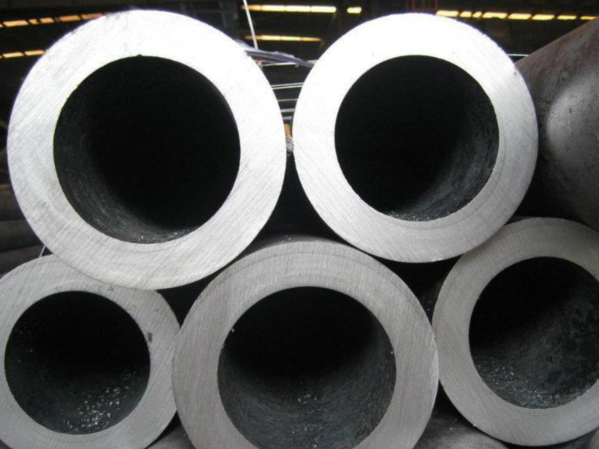High-carbon steel refers to carbon steel with W(C) higher than 0.6%, which has a greater tendency to harden and is more sensitive to the formation of cold cracks. High-carbon steel has poor weldability and requires special welding processes to ensure joint performance. In welded structures, it is generally rarely used.
High-carbon steel pipes are mainly used for machine parts that require high hardness and wear resistance. In heavy machinery manufacturing, welding problems of high-carbon steel parts will also be encountered. When welding high-carbon steel, it is necessary to comprehensively analyze possible welding defects , and take corresponding welding measures.

Weldability of high carbon steel pipe:
1. Welding method
High-carbon steel pipes are mainly used in structures with high hardness and wear resistance. The welding methods include submerged arc welding, electrode arc welding, and brazing.
2. Welding materials
High carbon steel pipe welding generally does not require the strength of the joint and the base metal. Electrode arc welding uses a low-hydrogen electrode with strong desulfurization ability, low metal hydrogen content, and good toughness. If the strength of the weld metal and the base metal is required, the corresponding level should be selected. If it is not required, choose a low-hydrogen electrode whose strength level is lower than that of the base metal. If the base metal is not allowed to preheat during the welding process, you can choose the heat-affected zone, austenitic stainless steel electrode, to prevent cold cracking, Obtain an austenite structure with strong crack resistance and good plasticity.
3. Groove preparation
Reduce the fusion ratio, limit the mass fraction of carbon in the weld metal, use U-shaped or V-shaped grooves during welding, and pay attention to cleaning the grooves and the oil and rust on both sides.
4. Warm up
Structural steel electrodes should be preheated before welding, and the temperature should be controlled at 250 ° C ~ 350 ° C.
5. Interlayer processing
In multi-layer multi-pass welding, the first welding is welded with a small diameter electrode and a small current. Usually, the workpiece is placed in a semi-vertical welding or by using the electrode to swing laterally, and the entire heat-affected zone is heated in a short time to Get preheating and warming effects.
6. Post-weld heat treatment
After welding, the workpiece is placed in a heating furnace for stress relief annealing, and the temperature is kept at 650 °C.
Due to the high carbon content and poor weldability of high carbon steel pipes, cracks are prone to occur in welding. Therefore, it is necessary to choose a reasonable welding process to reduce the occurrence of welding cracks and enhance the performance of welded joints.
Go here to learn more about " Cast iron pipe vs carbon steel pipe"


